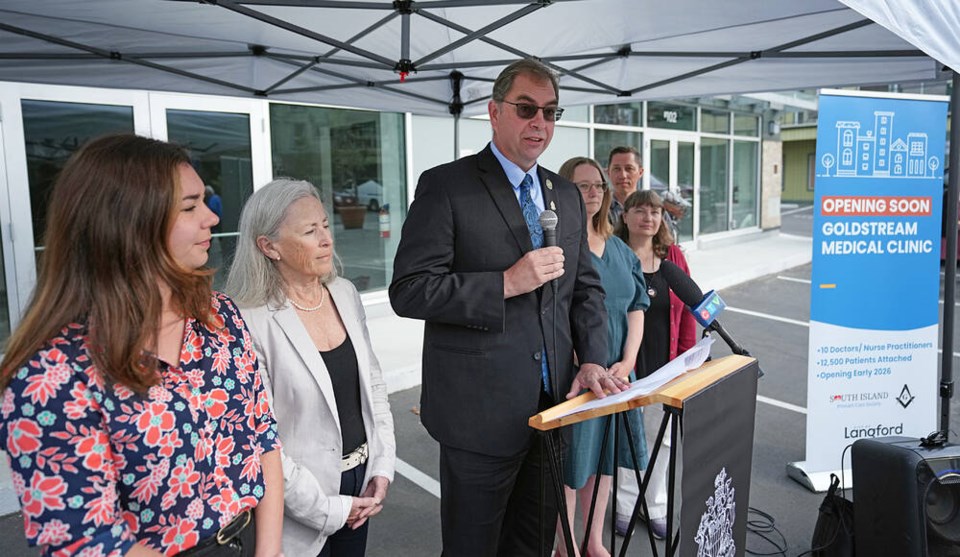Yes, let’s applaud Langford’s clinic — but let’s also insist that if the province wants municipalities to absorb more people, it must deliver the health-care infrastructure those people need.

A commentary by a former mayor of Colwood.
The announcement of a new medical clinic in downtown Langford is welcome and desperately needed. With an estimated 27,000 West Shore residents lacking access to a family doctor, bold, creative steps are appreciated by all.
I applaud the efforts of Langford, the South Island Primary Care Society and the Freemasons for stepping up where the provincial and federal governments have not.
But while I understand the public enthusiasm around this development — and the similar municipally run Colwood Clinic — I also worry we are beginning to normalize municipalities taking on the financial and legal risks of responsibilities that constitutionally fall to senior levels of government.
Providing access to publicly insured medical services is not a municipal mandate. It is the responsibility of the province and, under the Canada Health Act, the federal government.
We’re at a dangerous inflection point.
At the same time municipalities are being pressured by the province to meet aggressive housing targets, we are expected to do so without assurances that health infrastructure — like access to family doctors — will keep pace.
Municipalities are being told to overhaul zoning bylaws, designate transit-oriented areas, streamline development approvals and hit population growth benchmarks — or face direct provincial intervention.
Here is the plain truth: We cannot meet housing targets unless the province meets the primary-care needs of our growing population.
There is a difference between charitable support — such as the longstanding contributions of former Langford mayor Stew Young and the Westshore Charity Golf Tournament — and direct municipal subsidization of clinics, housing and doctor recruitment. Colwood’s municipally supported clinic, for example, gives priority access to residents with a Colwood postal code — something Health Canada has warned might violate the Canada Health Act’s requirement for uniform access to care.
And by stepping in to fund what is constitutionally a provincial and federal responsibility, municipalities are unintentionally creating a third layer of taxation — with the same taxpayer now funding health care through federal, provincial and municipal budgets.
That’s not innovative governance; it’s unsustainable cost-shifting onto local residents.
I urge all municipal taxpayers to ask the tough questions: If cities are forced to pay for health care now, what’s next? Are we creating a two-tier system where only communities with deep pockets or strong donor networks get access to health care?
Yes, let’s applaud Langford’s clinic — but let’s also insist that if the province wants municipalities to absorb more people, it must deliver the health-care infrastructure those people need.
Anything less is a betrayal of both the spirit of Canadian Medicare and the integrity of sustainable urban growth.